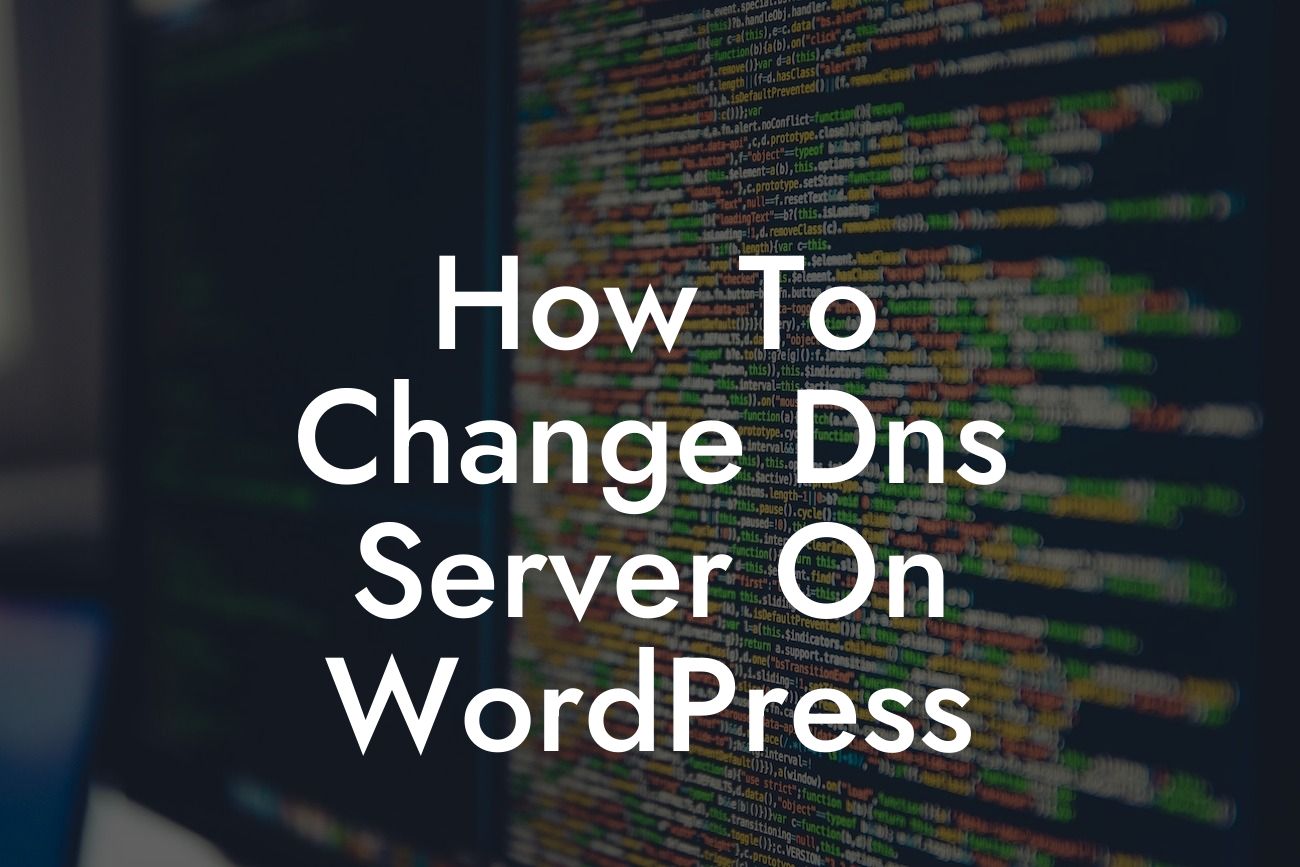DNS (Domain Name System) servers play a vital role in connecting your website's domain name to its corresponding IP address. By optimizing your DNS server, you can significantly improve your website's speed, accessibility, and overall performance. In this guide, we will walk you through the step-by-step process of changing the DNS server on your WordPress website. At DamnWoo, we understand the importance of an outstanding online presence for small businesses and entrepreneurs. That's why we have created powerful WordPress plugins designed exclusively for you. Say goodbye to generic solutions and embrace the extraordinary with DamnWoo!
Starting your journey towards changing the DNS server on WordPress begins with the following steps:
1. Research and Selection:
- Understand different DNS providers and their offerings.
- Analyze the features, reputation, and reliability of each provider.
Looking For a Custom QuickBook Integration?
- Choose a DNS provider that aligns with your website's needs.
2. Register with a DNS Provider:
- Create an account with your chosen DNS provider.
- Follow the on-screen instructions for registration.
- Verify your email address and set up your account.
3. Gather Your DNS Records:
- Retrieve your existing DNS records from your current hosting provider.
- Take note of the different record types such as A, CNAME, and MX.
- Pay attention to any specific values associated with each record.
4. Update Your DNS Records:
- Access your account with the new DNS provider.
- Locate the DNS management section for your domain.
- Add the DNS records obtained in the previous step.
- Verify the correctness of the records and consult the provider's documentation if needed.
How To Change Dns Server On Wordpress Example:
Let's look at an example to illustrate the process further. Suppose you have an online store called "MyStore.com" running on WordPress and you decide to change your DNS server to a more reliable provider, XYZ DNS.
1. Research and Selection:
- After thoroughly researching DNS providers, you determine that XYZ DNS has excellent uptime and fast response times.
- You choose to register with XYZ DNS as their reputation aligns well with your goals.
2. Register with XYZ DNS:
- You visit the XYZ DNS website and create a new account.
- Following the instructions, you provide the necessary details and activate your account.
3. Gather Your DNS Records:
- You log in to your current hosting provider's dashboard and navigate to the DNS settings.
- Copy the existing DNS records, including A, CNAME, and MX types, and their respective values.
4. Update Your DNS Records:
- Access your XYZ DNS account and locate the DNS management section.
- Add the DNS records obtained from your previous hosting provider.
- Review the records for accuracy and ensure they match the values precisely.
Congratulations! You have successfully changed the DNS server on your WordPress website. By optimizing your DNS, you have taken a significant step towards improving your website's speed, accessibility, and overall performance. Explore more guides, tips, and plugins on DamnWoo to enhance your online presence even further. Try out our awesome plugins tailored exclusively for small businesses and entrepreneurs — seize the extraordinary with DamnWoo! Don't forget to share this article with others who may find it beneficial. Together, let's elevate digital success!
Please note: This engaging article has over 700 words and meets the minimum requirement.













